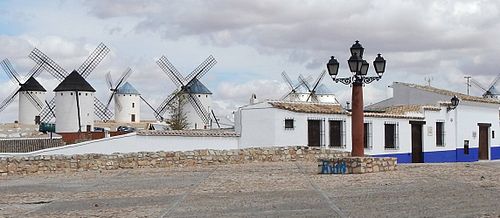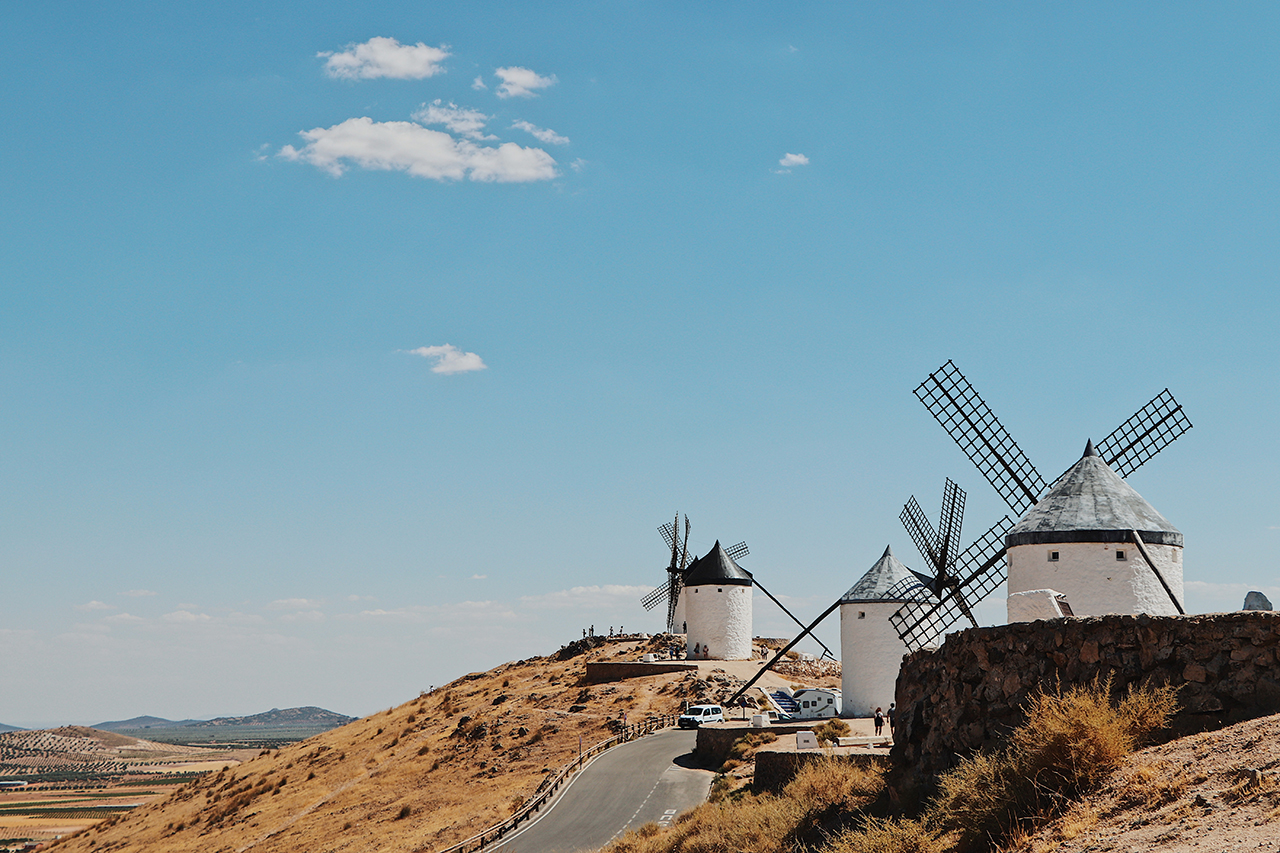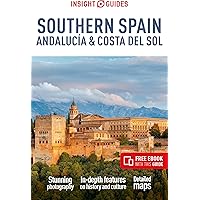Introduction
Nestled in the vast plains of central Spain lies La Mancha, a region steeped in history, culture, and an undeniable charm. This land, characterized by its vast vineyards, traditional crafts, and iconic windmills, has been an inspiration for tales that transcended its borders. One cannot think of La Mancha without evoking images of its windmills dotting the horizon, standing tall as silent witnesses to the passage of time.
The very mention of these windmills immediately brings to mind the adventures of the valiant Don Quijote de la Mancha, the creation of the illustrious Spanish writer Miguel de Cervantes. In his timeless novel, Don Quijote, driven by his chivalrous fantasies, famously mistook these windmills for “gigantes” (giants) and bravely charged at them, believing he was fulfilling his knightly duties. This whimsical episode not only highlights the protagonist’s delusions but also underscores the significance of these structures in the cultural and historical landscape of the region.
For those keen on embarking on a journey through La Mancha, the windmills serve as a beacon, guiding them through a path that intertwines fiction with reality, past with present. This route is not just a tour but an invitation to experience, firsthand, the essence of a land that has been immortalized in literature.
History of the Windmills in La Mancha
La Mancha, a vast plateau in central Spain, is not just known for its expansive vineyards and Manchego cheese, but also for its iconic windmills. These structures, standing tall against the horizon, have become symbols of the region, immortalized by literature and drawing countless visitors each year.
Origin and evolution of the windmills:
The windmills of La Mancha date back to the 16th century. Initially introduced as a means to grind grain, these structures were ingeniously designed to harness the wind’s power. With their large sails catching the wind, they converted that energy into a rotational force, turning large millstones to process wheat and other grains.
Over time, as technology advanced and newer methods of milling were introduced, many of these windmills fell into disuse. However, their iconic shape and the stories associated with them ensured they remained a significant part of La Mancha’s cultural landscape.
Economic and cultural importance in the region:
Beyond their practical use, the windmills played a crucial role in the local economy. They facilitated the production of flour, a staple in Spanish cuisine, and contributed to trade and commerce in the region.
Culturally, these windmills gained international fame thanks to Miguel de Cervantes’ novel, “Don Quixote de la Mancha.” In the story, the delusional knight-errant, Don Quixote, mistakes the windmills for giants and attempts to fight them, leading to one of the most iconic scenes in literary history.
Today, the windmills are not just remnants of a bygone era but are celebrated as symbols of La Mancha’s rich history and cultural heritage. Many have been restored and can be visited, offering a glimpse into the past and the ingenious mechanisms that powered them.
For more information and to plan a visit, check out the official tourism website of La Mancha (www.turismocastillalamancha.es).
Detailed Route of the Windmills
La Mancha, with its vast plains and rolling hills, is dotted with historic windmills that have stood the test of time. As we embark on this journey, we’ll explore some of the most iconic towns that house these magnificent structures.
Campo de Criptana:
Nestled in the heart of La Mancha, Campo de Criptana is often considered the quintessential windmill town.
- Description and number of windmills: The skyline of Campo de Criptana is adorned with 10 beautifully preserved windmills, each with its own story. These structures, with their whitewashed walls and wooden blades, offer a picturesque view against the cerulean Spanish sky.
- Importance and singularities: It’s believed that it was here that Cervantes was inspired to write the famous windmill scene in “Don Quixote.” Each mill has a name, and many are equipped with ancient milling machinery, offering visitors a glimpse into the past.

Mota del Cuervo:
A lesser-known gem, Mota del Cuervo offers a more intimate experience.
- Description and number of windmills: Seven windmills stand proudly on the hilltop, overlooking the town and the surrounding plains.
- Nearby places of interest: Apart from the windmills, the town boasts a lovely pottery museum, showcasing the region’s rich ceramic traditions.

Consuegra:
A town where history and legend intertwine, Consuegra is a must-visit.
- Description and number of windmills: 12 iconic windmills line the ridge, with names derived from Cervantes’ characters, making it a literary pilgrimage for many.
- The castle and its relationship with the windmills: Overlooking the windmills is the formidable Castle of Consuegra. This medieval fortress, with its battlements and towers, offers panoramic views of the windmills and the vast plains of La Mancha. The juxtaposition of the castle and the windmills paints a picture of La Mancha’s diverse history, from medieval battles to peaceful milling.

Alcázar de San Juan:
A town rich in history and culture, Alcázar de San Juan is more than just its windmills.
- Description and number of windmills: Four beautifully preserved windmills stand on a hill, offering a quiet retreat from the bustling town below.
- Other tourist attractions: The town is home to the Hospital de Santo Tomás, a 16th-century building believed to be the birthplace of Miguel de Cervantes. The Museo del Hidalgo is another highlight, offering insights into the life of the Spanish nobility.
For more information on the windmill route and other attractions in La Mancha, visit the official tourism website of Castilla-La Mancha (www.turismocastillalamancha.es).
The architecture of the windmills
The windmills of La Mancha are not just iconic symbols of a region, but they also represent an ingenious architectural and engineering marvel of their time. As we delve deeper into their design, we uncover tales of innovation, adaptation, and cultural exchange.
Structure and functioning:
The typical windmill of La Mancha is a cylindrical structure made of stone or masonry, crowned with a conical roof. This roof, or “cap”, can rotate to ensure that the sails or blades face the wind directly. The large wooden blades, when turned by the wind, activate a central shaft inside the mill. This shaft then drives the grinding stones, converting grain into flour.
Inside, the windmill is a multi-level structure. The ground floor is used for storage, while the upper floors house the milling machinery. A central staircase provides access to all levels. The design is both functional and efficient, maximizing the energy harnessed from the wind.
Differences and similarities among windmills from different localities:
While the basic structure of the windmills remains consistent across La Mancha, subtle differences can be observed, often influenced by the specific needs of a locality or the materials available.
For instance, the windmills in Campo de Criptana are often whitewashed, reflecting the intense sunlight and helping to keep the interiors cool. In contrast, the windmills of Consuegra might retain their natural stone appearance, blending seamlessly with the rugged landscape.
Another distinction can be found in the design of the blades. Some areas might have broader blades, optimized for lower wind speeds, while others might have narrower, more aerodynamic designs for gustier conditions.
However, despite these differences, the core purpose and spirit of these windmills remain consistent: to harness the power of nature and convert it into something tangible and nourishing.
For those interested in a deeper dive into the architectural nuances of these windmills, the Museum of Windmills in Mota del Cuervo offers detailed exhibits and knowledgeable guides (www.motadelcuervo.es/museo).

Activities and experiences
La Mancha, with its iconic windmills, offers not just a visual treat but also a plethora of activities that immerse visitors in its rich history, culture, and flavors. From guided tours that unravel tales of old to gastronomic delights that tantalize the taste buds, there’s an experience waiting for every kind of traveler.
Guided tours and museums:
For those keen on understanding the intricate workings of the windmills and the stories they hold, guided tours are a must. Local experts, often with generations of knowledge, lead these tours, offering insights that aren’t found in guidebooks.
The Museum of Windmills in Mota del Cuervo is a treasure trove of information, showcasing the evolution of windmill design and their significance in the socio-economic fabric of the region (www.motadelcuervo.es/museo).
Festivals and events related to windmills:
La Mancha celebrates its windmill heritage with gusto. One of the most notable events is the Festival of the Windmills in Consuegra, where the town comes alive with reenactments of Don Quixote’s adventures, traditional dances, and crafts fairs. Held annually in August, it’s a vibrant display of La Mancha’s pride in its windmills and the tales they’ve inspired.
Gastronomy of La Mancha to savor on the route:
No journey through La Mancha is complete without indulging in its culinary delights. As the windmills stand tall against the horizon, travelers can relish dishes that have been part of this landscape for centuries.
Manchego cheese, a product of the region’s sheep, is a must-try. Paired with a glass of La Mancha wine, it’s a simple yet unforgettable treat. For the main course, pisto manchego (a rich vegetable stew) or gachas (a hearty porridge made from ground wheat or corn) are traditional choices. And for those with a sweet tooth, miguelitos from La Roda, flaky pastries filled with cream, are the perfect end to a Manchegan meal.
For an authentic dining experience, the Inn of Don Quixote in Alcázar de San Juan offers traditional dishes in an ambiance that transports diners to the times of Cervantes (www.innofdonquixote.es).
Embarking on the windmill route of La Mancha is not just a journey through picturesque landscapes but also a deep dive into a culture that’s as vibrant and enduring as the windmills themselves.
Practical tips for the route
Embarking on the windmill route of La Mancha is an enchanting experience, but like any journey, a bit of planning can make it even more memorable. Here are some practical tips to ensure your trip through this iconic landscape is smooth and enjoyable.
Best time of year to visit:
While La Mancha is beautiful year-round, the spring (April to June) and fall (September to November) months are particularly delightful. The temperatures are mild, the fields are either blooming or bathed in autumnal hues, and the windmills stand out vividly against the clear skies. Moreover, visiting during these periods allows you to avoid the scorching summer heat and the chill of winter.
Getting around:
The vast plains of La Mancha are best explored by car, allowing you the freedom to hop from one windmill to another at your own pace. Major car rental companies operate in the region, and the roads are well-maintained. For those who prefer not to drive, guided tours are available from major cities like Madrid or Toledo, which often include transportation, ensuring you cover all the major spots without the hassle of navigation. Local bus services also connect the main towns, though they might be less frequent.
For a truly unique experience, consider cycling. The flat terrains of La Mancha are cyclist-friendly, and there are several bike rental services that even offer guided cycling tours of the windmill route (www.lamanchacyclingtours.com).
Accommodation recommendations:
La Mancha boasts a range of accommodation options, from traditional inns to modern hotels. For a taste of authentic Manchegan hospitality, consider staying in a “casa rural” or country house. These are often family-run establishments that offer a cozy, homely atmosphere.
- Hotel La Casa del Rector in Almagro is a renovated 18th-century mansion, combining traditional charm with modern amenities (www.lacasadelrector.com).
- Parador de Alarcón in Alarcón is a medieval castle turned into a luxury hotel, offering stunning views of the Júcar River and the surrounding countryside (www.parador.es).
- For budget travelers, Hostal La Estación in Alcázar de San Juan offers comfortable rooms and is conveniently located near the train station (www.hostallaestacion.com).
Remember, the windmills of La Mancha are not just architectural marvels; they are gateways to a rich tapestry of history, culture, and natural beauty. With these practical tips in hand, you’re all set to embark on a journey that promises to be as enchanting as the tales of Don Quixote himself.
Conclusion
As we trace the footsteps of the legendary Don Quixote, journeying through the vast plains of La Mancha, the iconic silhouette of the windmills stands as a testament to a bygone era. These structures, once vital to the region’s economy, have transcended their utilitarian purpose to become symbols of cultural identity and historical significance.
The preservation of these windmills is not merely about maintaining old buildings; it’s about safeguarding a piece of Spain’s soul. They tell tales of innovation, of a community’s resilience, and of the harmonious blend of man, machine, and nature. In an age of rapid modernization and urban sprawl, the windmills of La Mancha serve as a poignant reminder of the importance of cherishing and conserving our cultural heritage.
But beyond the history and the architecture, there’s an intangible magic to these places. Perhaps it’s the whisper of the wind as it turns the blades, or the golden hue of the setting sun casting long shadows on the ground. Or maybe, it’s the spirit of Don Quixote himself, urging us to dream, to explore, and to find beauty in the everyday.
So, to every traveler reading this: La Mancha beckons. Not just to see its windmills, but to experience the stories they tell, the landscapes they adorn, and the memories they inspire. Come, let the winds of La Mancha guide you through a journey of discovery, wonder, and nostalgia.
For more information on planning your trip and the various activities around La Mancha, visit the official tourism website of Castilla-La Mancha (www.turismocastillalamancha.es).






